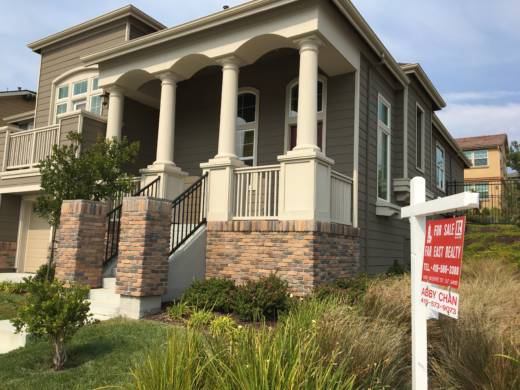In Oakland, only 7 percent of the home loans in 2015 went to black households despite African-Americans making up 28 percent of the city’s population.
“It starts to reflect, what is kind of stirring but the words are not really said, which is that there is still institutional and systemic racism,” said Nikki Beasley, executive director of Richmond Neighborhood Housing Services, a group that helps low-income families get into home ownership.
Low rates of home ownership among African-Americans date back to the “redlining” racial discriminatory mortgage lending practices of the 1930s that denied black homebuyers financing tools based on race. The Federal Housing Administration, created in 1934, refused to federally insure mortgages to black people, and even to homebuyers living near black neighborhoods, thereby excluding African-Americans from home ownership and the opportunity to generate personal wealth through real estate.
Redlining was outlawed in 1968, but the effects still linger. Predatory lending targeting African-Americans with ballooning mortgages helped cause the 2008 housing market crash.
The city of Oakland sued Wells Fargo in 2015, accusing the Bay Area-based bank of targeting African-American and Latino residents with more expensive loans that caused many to lose their homes.
“The predatory practice of targeting people of color with subprime and unaffordable mortgages leading up to the Great Recession -- we term that reverse redlining,” Ahuja said.
The report shows that five of the top 10 home loan lenders in California were non-banks. In Fresno, where Latinos were 47 percent of the population in 2015, nine out of the top 10 home loan lenders were non-traditional bank institutions. Beasley said online lenders are a great second resource for homebuyers, but their mortgage packages can come with hefty fees.
“They do a great job, but it’s an expensive loan to get, and we really need to make sure we have leveraged all other possibilities before taking them there because it’s expensive,” she said.
Stephanie Wiggins, 54, lost her home in the 2008 crash and has been renting in the Bay Area since then. She’s now living in Alameda. About four years ago, Wiggins was financially ready to get back into the housing market but couldn’t qualify for a loan.
“I was always getting ruled out or put in some sort of lottery," Wiggins said. “It just felt very iffy -- very chancy.”
Wiggins, a single mother who is African-American, said there were many barriers. She was told her student debt-to-income ratio was too high or that she didn’t live in the right area to qualify for a certain program. She had almost given up on trying to get a home loan until she and her sister attended a housing fair and met Beasley in November.
Wiggins was pre-approved for a loan and has her eye on a house in Solano County. It’s far from where she lives now and is about an hour commute to her job in Contra Costa County. But Wiggins said it’s spacious, new and in a safe community.
“Having the opportunity to own a home and build personal wealth is still helping my community,” she said. “I’m far but not that far, and I could still commute in an hour, and still go see people and participate in an event.”

